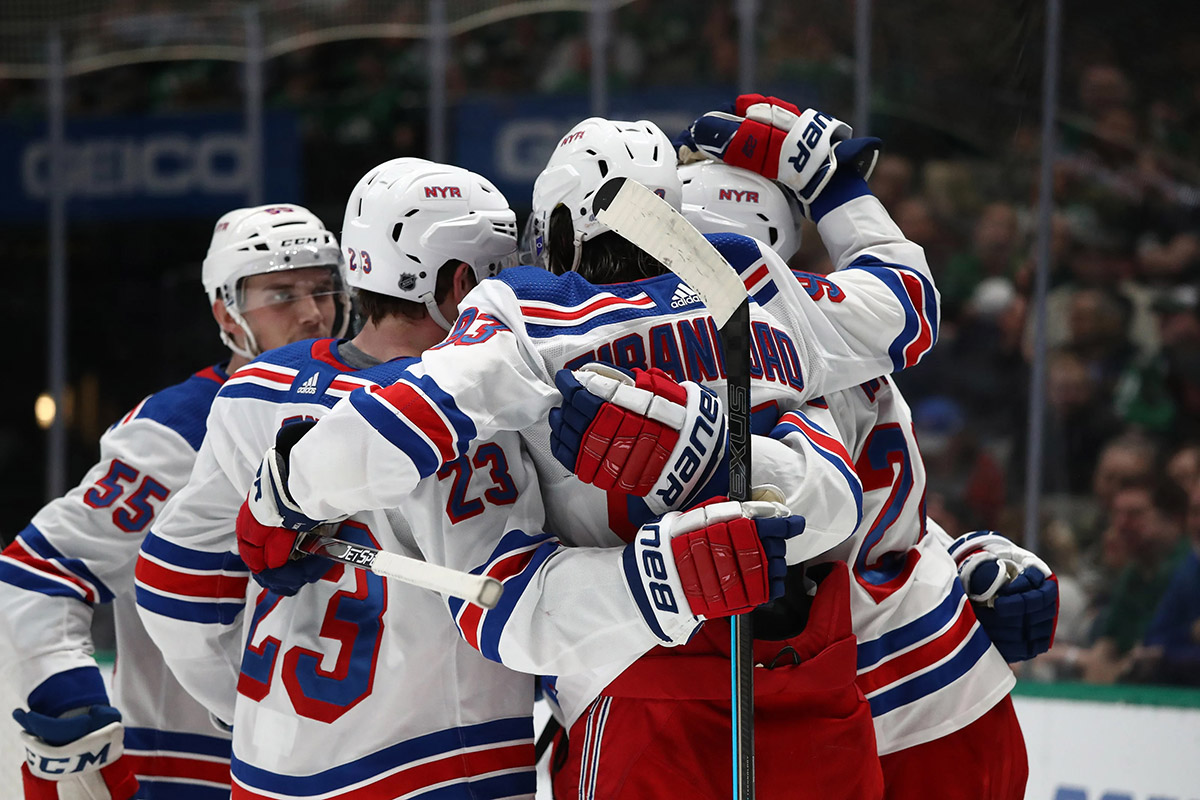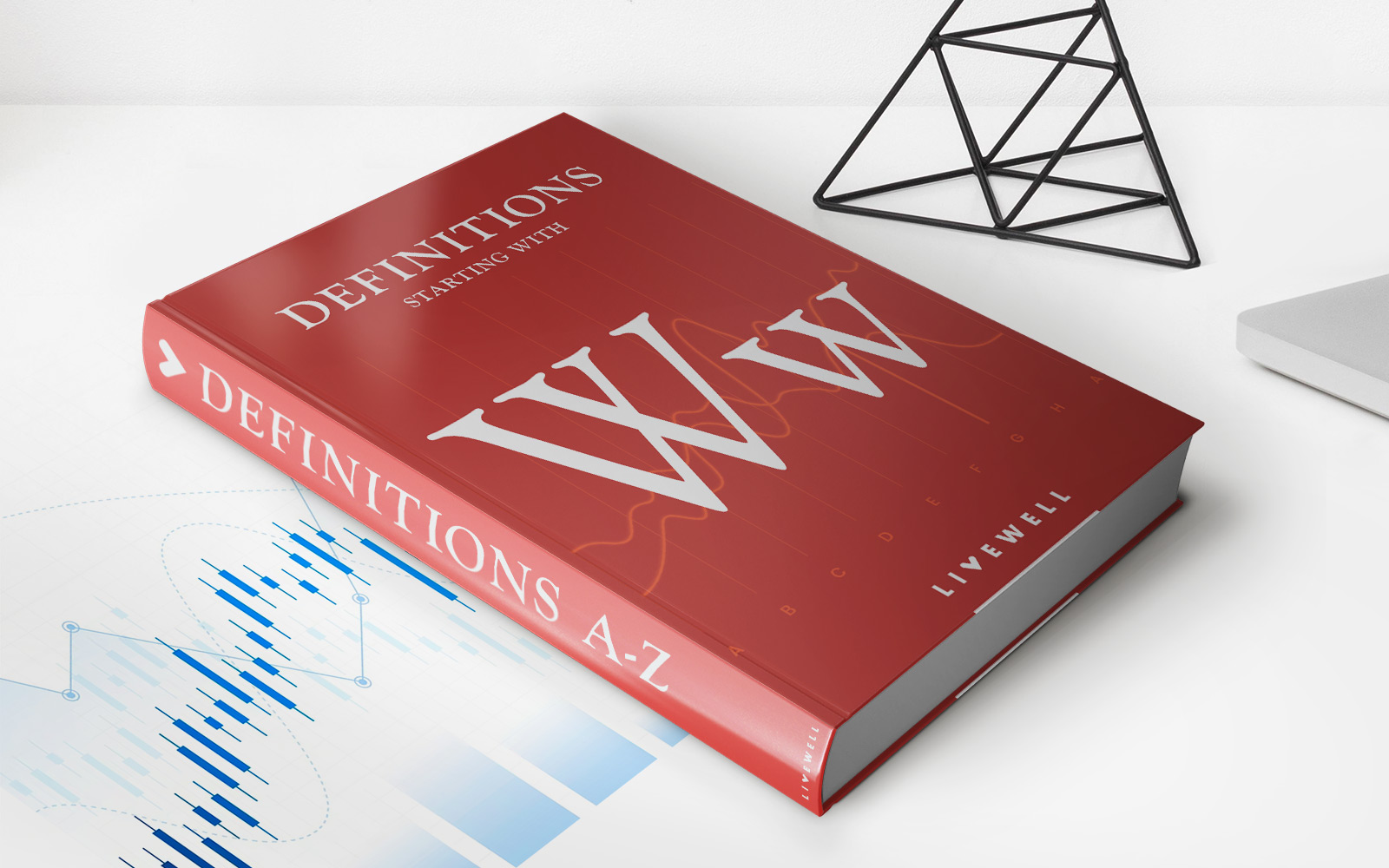Home>Finance>How Many Contact Buyouts Do The NY Rangers Have?


Finance
How Many Contact Buyouts Do The NY Rangers Have?
Modified: December 30, 2023
Discover the financial implications of contact buyouts for the NY Rangers. Find out how many they currently have and what it means for the team's finances.
(Many of the links in this article redirect to a specific reviewed product. Your purchase of these products through affiliate links helps to generate commission for LiveWell, at no extra cost. Learn more)
Table of Contents
Introduction
The New York Rangers, one of the most storied franchises in the National Hockey League (NHL), have undergone significant changes in recent years. As part of the team’s efforts to rebuild and reshape their roster, they have utilized a strategy known as contract buyouts. In this article, we will explore the concept of contract buyouts and delve into how many contract buyouts the NY Rangers have executed.
Before we delve into the specifics, let’s first define what a contract buyout entails. Essentially, a contract buyout is a mechanism that allows an NHL team to terminate a player’s contract ahead of its scheduled expiration. This is typically done for economic or performance-related reasons. When a contract is bought out, the team must pay a portion of the remaining contract value to the player over a designated period, while also incurring a cap hit.
Now, let’s shift our focus specifically to the New York Rangers. Over the years, the Rangers have made strategic use of contract buyouts to navigate the complex landscape of the NHL’s salary cap system. The salary cap acts as a ceiling on the total amount a team can spend on player salaries, creating a challenging financial environment for teams aiming to manage their player contracts effectively.
By executing contract buyouts, the NY Rangers aim to alleviate their salary cap constraints. This allows them to create more flexibility to sign new players, promote young talent, and make other roster moves that align with their long-term objectives. Understanding the number of contract buyouts the Rangers have undertaken is crucial to gain insight into the team’s recent roster management decisions and the financial implications of these moves.
Definition of a Contract Buyout
A contract buyout in the context of the NHL refers to the termination of a player’s contract before its scheduled expiration. It is a mechanism that allows teams to part ways with a player for various reasons, typically due to performance or financial considerations. When a contract is bought out, the team agrees to pay a portion of the remaining contract value to the player over a designated period of time. This payment is usually spread out over double the remaining length of the contract.
Contract buyouts are governed by the terms outlined in the Collective Bargaining Agreement (CBA) between the NHL and the players’ association. The CBA provides specific guidelines and formulas that determine the buyout amount and the impact on a team’s salary cap. It is important to note that not all contracts are eligible for buyouts, and there are certain restrictions and limitations that teams must adhere to.
The primary reason for executing a contract buyout is often financial in nature. Teams may find themselves in a situation where a player’s salary is burdensome and constrains the team’s ability to construct a competitive roster within the constraints of the salary cap. By buying out a contract, a team can alleviate some of the financial pressure and reallocate resources towards other roster needs.
Performance is another key factor that can lead to a contract buyout. If a player fails to meet expectations or underperforms relative to the value of their contract, the team may choose to cut ties and remove that player from their roster. This allows the team to free up a roster spot for a more productive player or prospects from their development system.
It’s important to note that a contract buyout is not an easy decision for a team to make. There are financial implications involved, as the team will still have to pay the player a portion of the remaining contract value. Additionally, the cap hit resulting from the buyout may stretch over several years, affecting the team’s ability to make future signings or trades.
In the next section, we will explore the specific contract buyouts that the New York Rangers have executed in recent years and their impact on the team’s cap space and roster composition.
Overview of the New York Rangers’ Contract Buyouts
The New York Rangers, like many NHL teams, have utilized contract buyouts as part of their roster management strategy. Over the years, the Rangers have made strategic decisions to buy out contracts in order to create financial flexibility and reshape their roster. Let’s take a closer look at some of the key contract buyouts the Rangers have executed.
One notable contract buyout by the Rangers involved defenseman Kevin Shattenkirk. In August 2019, the Rangers bought out the remaining two years of Shattenkirk’s contract. This move was made to alleviate the team’s salary cap constraints and enable them to pursue other players in free agency. Shattenkirk had signed a four-year, $26.6 million contract with the Rangers in 2017, but his performance on the ice did not meet expectations. The buyout allowed the Rangers to spread the remaining value of Shattenkirk’s contract over four years instead of the original two.
Another notable contract buyout by the Rangers was forward Brad Richards. After signing a nine-year, $60 million contract with the Rangers in 2011, Richards struggled to live up to the expectations. In June 2014, the Rangers used a compliance buyout to terminate his contract. This compliance buyout was allowed as part of a special provision in the NHL’s CBA following the lockout. The compliance buyout did not count against the team’s salary cap, providing the Rangers with immediate relief.
It’s important to understand that the decision to buy out a contract involves careful considerations. The team must balance the financial impact of the buyout against the potential benefits it brings in terms of roster flexibility and performance. The Rangers, under the guidance of their management team, have used contract buyouts strategically to reshape their roster and create opportunities for younger players to step up.
These contract buyouts have had varying degrees of success for the Rangers. Some have allowed them to allocate resources towards new signings or to provide opportunities for prospects from their development system. However, it’s worth noting that the financial impact of the buyouts is an important factor to consider. Spread out over multiple years, the cap hit resulting from a buyout can affect the team’s ability to make future signings or trades.
Now that we have an overview of the contract buyouts carried out by the New York Rangers, let’s dig deeper into the process and the impact it has on the team’s salary cap.
Explanation of Buyout Process and Impact on Salary Cap
The contract buyout process in the NHL follows specific rules and guidelines outlined in the Collective Bargaining Agreement (CBA) between the NHL and the players’ association. Understanding the buyout process is essential to grasp how it impacts a team’s salary cap, including the New York Rangers.
When a team executes a contract buyout, they must adhere to the following steps:
- The team submits a notice of intent to buy out a player’s contract.
- The player is placed on waivers for a designated period, during which other NHL teams have the opportunity to claim the player and assume the remaining contract.
- If the player goes unclaimed, the team can proceed with the buyout.
- The buyout terms are calculated based on the player’s age and the remaining value of their contract.
- The team must pay the player a portion of the remaining contract value, spread out over double the remaining length of the contract.
- The salary cap hit resulting from the buyout is calculated using a formula specified in the CBA.
Now let’s delve into the impact of a contract buyout on a team’s salary cap. In general, the buyout creates a “cap hit” for the team, which refers to the amount of salary that counts against the team’s salary cap each season. However, buyout cap hits are calculated differently depending on the type of contract:
For players under the age of 26 at the time of the buyout, the buyout cap hit is calculated as two-thirds of the remaining value of the contract, spread out over twice the remaining length of the contract.
For players aged 26 or older at the time of the buyout, the buyout cap hit is calculated as one-third of the remaining value of the contract, spread out over twice the remaining length of the contract.
It’s important to note that the cap hit resulting from a buyout is not evenly distributed over the years. The impact will be greater in the earlier years and gradually decrease over time.
For example, let’s say a player has two years remaining on their contract with a total remaining value of $10 million. If the player is under 26 years old, the buyout cap hit for the team would be approximately $6.67 million in the first year and $1.67 million in the second year. For a player aged 26 or older, the buyout cap hit would be approximately $3.33 million in the first year and $833,333 in the second year.
The salary cap hit resulting from contract buyouts can have significant implications for a team’s financial flexibility and ability to make other roster moves. It may restrict the team’s ability to sign new players or pursue trades, especially in the earlier years of the buyout. However, as the buyout cap hit decreases over time, it gradually eases the burden on the team’s salary cap.
Understanding the buyout process and its impact on the salary cap is crucial for teams like the New York Rangers, who utilize contract buyouts strategically to manage their roster and create opportunities for future success.
List of Contract Buyouts by the NY Rangers
Over the years, the New York Rangers have executed several contract buyouts as part of their roster management strategy. Let’s take a closer look at some of the notable buyouts carried out by the Rangers:
- Wade Redden: In January 2013, the Rangers bought out the remaining two years of Wade Redden’s six-year, $39 million contract. Redden had struggled to meet expectations on the ice, and the buyout allowed the Rangers to remove his contract from their salary cap. Redden’s buyout had a cap hit of approximately $5.6 million in the first year and $3.4 million in the second year.
- Dan Girardi: In June 2017, the Rangers bought out the remaining three years of Dan Girardi’s six-year, $33 million contract. Girardi, a long-time defenseman for the Rangers, had seen his performance decline in the final years of his contract. The buyout helped the Rangers free up cap space and allocate resources towards other roster needs. Girardi’s buyout resulted in a cap hit of approximately $2.61 million per year spread over six years.
- Henrik Lundqvist: In September 2020, the Rangers bought out the final year of Henrik Lundqvist’s contract. Lundqvist, a beloved goaltender and franchise icon, had spent 15 years with the Rangers before the team decided to move in a different direction. The buyout allowed Lundqvist to become a free agent and pursue opportunities with other NHL teams. The cap hit from Lundqvist’s buyout will be approximately $5.5 million spread over two years.
- Kevin Shattenkirk: In August 2019, the Rangers bought out the remaining two years of Kevin Shattenkirk’s four-year, $26.6 million contract. Shattenkirk had not lived up to expectations after signing with the Rangers as a free agent in 2017. The buyout provided the Rangers with salary cap relief and the ability to pursue other players in free agency. Shattenkirk’s buyout resulted in a cap hit of approximately $1.48 million per year spread over four years.
These are just a few examples of the contract buyouts carried out by the New York Rangers. Each buyout was made with the intention of creating financial flexibility and improving the team’s roster composition. While the cap hits resulting from these buyouts will affect the team’s salary cap for several years, the Rangers have strategically managed their roster to position themselves for future success.
Now that we have explored the contract buyouts executed by the Rangers, let’s analyze the financial implications of these moves and compare them to other NHL teams.
Analysis of the Financial Implications of Contract Buyouts
Executing contract buyouts can have significant financial implications for NHL teams, including the New York Rangers. While buyouts provide teams with greater flexibility in terms of roster management, they also come with long-term financial considerations. Let’s take a closer look at the financial implications of contract buyouts and their impact on the Rangers.
The primary financial impact of a contract buyout is the resulting cap hit, which refers to the amount of salary that counts against a team’s salary cap each season. The cap hit resulting from a buyout is spread out over a designated period of time, based on the remaining length of the contract.
For example, the buyout of Wade Redden’s contract resulted in a cap hit of approximately $5.6 million in the first year and $3.4 million in the second year. This cap hit impacted the Rangers’ ability to make other roster moves during those years. Similarly, the buyout of Dan Girardi’s contract resulted in a cap hit of approximately $2.61 million per year spread over six years. While the cap hit decreased over time, it still had an impact on the Rangers’ salary cap flexibility.
It is crucial for teams to carefully manage their salary cap space and plan for the long-term financial implications of buyouts. The cap hits resulting from buyouts can inhibit a team’s ability to sign new players, make trades, or maneuver within the salary cap constraints. This is why teams must strategically evaluate the cost-benefit ratio of executing contract buyouts.
For the Rangers, the financial implications of their buyouts are not limited to the cap hits. When a contract is bought out, the team is still obligated to pay a portion of the remaining contract value to the player. This payment is spread out over double the remaining length of the contract.
For instance, in the cases of Kevin Shattenkirk and Wade Redden, the Rangers were responsible for paying a portion of the remaining contract value to these players over the buyout period. While this payment is separate from the salary cap hit, it is an additional financial consideration that teams must factor into their budgeting and future planning.
Overall, contract buyouts can provide teams with the opportunity to restructure their roster and create financial flexibility. However, it is essential for teams like the Rangers to carefully manage their salary cap and the long-term financial implications of buyouts. By balancing the short-term benefits of roster restructuring with the long-term financial considerations, teams can effectively navigate the complex financial landscape of the NHL.
Now, let’s compare the contract buyout strategies of the New York Rangers with other teams in the NHL.
Comparison with Other NHL Teams
When it comes to contract buyouts, the New York Rangers are not alone in utilizing this roster management strategy. Many other NHL teams have also executed contract buyouts to alleviate salary cap constraints and reshape their rosters. Let’s compare the contract buyout strategies of the New York Rangers with those of other teams in the league.
One team known for strategically using contract buyouts is the Detroit Red Wings. The Red Wings have executed multiple buyouts in recent years, including contracts of players like Johan Franzen and Stephen Weiss. By buying out these contracts, the Red Wings were able to create salary cap relief and open up roster spots for younger players.
Another team with a history of contract buyouts is the Vancouver Canucks. The Canucks have used buyouts as part of their roster retooling efforts. Notable buyouts by the Canucks include contracts of players like Roberto Luongo and Ryan Spooner. These buyouts have allowed the Canucks to free up cap space and make necessary changes to their roster composition.
It’s worth noting that certain teams have faced more significant salary cap challenges, leading to a higher volume of contract buyouts. For example, teams like the Chicago Blackhawks and the Pittsburgh Penguins have employed buyouts to manage their salary cap situations after successful playoff runs that resulted in higher player salaries.
When comparing the New York Rangers to other NHL teams, it is evident that contract buyouts are a common tool used by organizations to navigate the salary cap and make roster adjustments. Each team’s approach to buyouts may vary depending on their specific circumstances, including the contracts they hold, player performance, and long-term organizational goals.
Ultimately, the success of contract buyouts can be subjective and dependent on future player signings, trade acquisitions, and overall team performance. It requires careful consideration of financial implications, future salary cap projections, and the team’s overall strategy.
As the NHL continues to evolve and teams face ongoing salary cap challenges, it will be interesting to see how different franchises utilize contract buyouts to manage their rosters and create opportunities for success.
Now, let’s wrap up the article with a concluding section.
Conclusion
Contract buyouts are an integral part of roster management in the NHL, and the New York Rangers have strategically used this tool to reshape their roster and create financial flexibility. By buying out contracts, the Rangers have been able to allocate resources towards new signings, promote young talent, and adapt to the constraints of the salary cap.
We explored the concept of contract buyouts and discovered how they allow teams like the Rangers to terminate a player’s contract before its scheduled expiration. We also identified the impact on a team’s salary cap, including the cap hit resulting from the buyout and the financial payment to the player over a designated period.
By examining notable contract buyouts carried out by the New York Rangers, such as those of Kevin Shattenkirk, Dan Girardi, and Henrik Lundqvist, we gained insight into the team’s willingness to make difficult decisions to improve their roster composition and salary cap situation.
Furthermore, we compared the Rangers’ contract buyout strategies with other NHL teams, including the Detroit Red Wings and the Vancouver Canucks. We saw that contract buyouts are a widely utilized tool throughout the league, with teams employing them to manage salary cap challenges and open opportunities for roster changes.
While contract buyouts offer flexibility, they also come with long-term financial considerations. The cap hits resulting from buyouts can impact a team’s salary cap space and restrict their ability to make future signings or trades. As such, teams must carefully evaluate the cost-benefit ratio of executing buyouts and plan for the long-term financial implications.
In conclusion, contract buyouts play a significant role in the roster management strategies of NHL teams, including the New York Rangers. By strategically executing buyouts, teams can navigate the complexities of the salary cap system and position themselves for success.
As the NHL landscape continues to evolve, teams will need to adapt and utilize contract buyouts effectively to achieve their goals. Understanding the financial implications, player performance, and long-term objectives will be key to making informed decisions and maximizing the benefits of contract buyouts.
Now that we’ve explored the world of contract buyouts by the New York Rangers, we have gained a deeper understanding of their impact and significance in the NHL.














